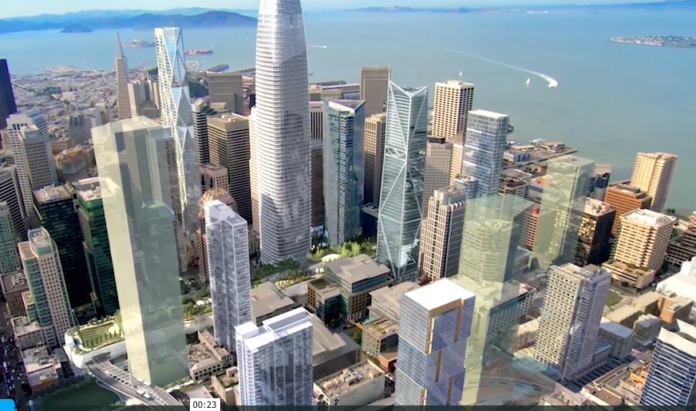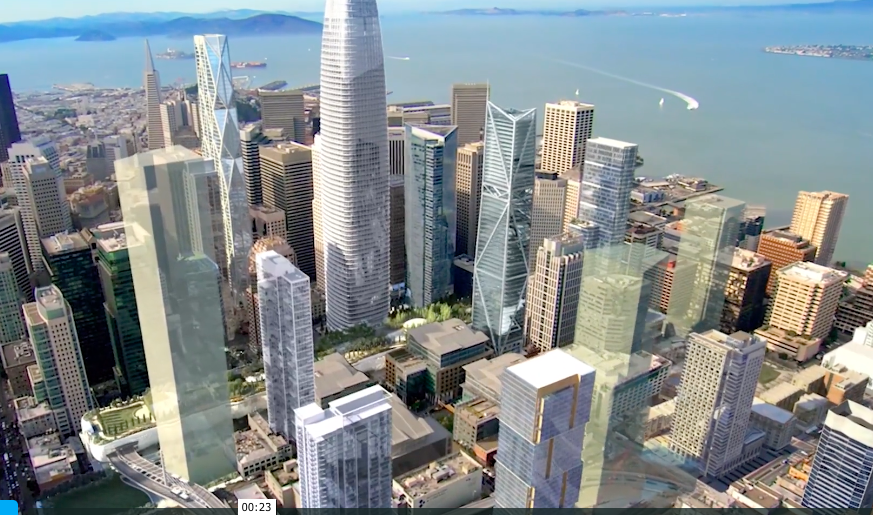
The long-awaited Nexus Study documenting how much affordable housing is actually needed for the added workforce of new office developments has finally been released by the city. It concludes that 810 new low/moderate/middle income-affordable housing units are needed for the employees of every 1 million square feet of new office buildings.
The study assumes there is one new employee for every 238 square feet of a new office building, and there are 1.74 workers in each new household. So 2,420 new housing units of all kinds are needed for every 1 million square feet of new office space. The study then assumes 33.5 percent of the new workers will earn less than 120% of San Francisco median income (which is $147,000 a year for a family of four) and so need affordable housing, which is 810 units.

The city’s 2017 Inclusionary Housing study determined that at least $235,000 per unit of city subsidy is necessary to build just one affordable housing unit. That means it would take $190 million in city housing funds to build those 810 new affordable housing.
That equals $190 per square foot of new office space.
But the current jobs-housing linkage fee intended to provide this necessary City housing funding is only $26 per square foot today. And the city legislation recently introduced to increase the fee would raise it to only $38 per square foot.
So the proposed fee would just fund only 20 percent of the new affordable housing needed for the workforce of a new office building. Just 162 of the 810 units needed for each 1 million square feet. That is a shortfall of 648 units per million feet of office projects.
And every year the Prop M annual limit allows the Planning Commission to approved 950,000 square feet of office development. So each year, on average, the city’s affordable housing situation gets 616 units worse thanks to new office development for the Tech Industry.
Of course, other city housing funds badly needed to build new affordable housing for today’s San Franciscans could be diverted to meeting this shortfall. That is, essentially, the city would be subsidizing the growth of the tech industry in San Francisco in those new office buildings — at the expense of the city’s existing Central City communities and their residents!
Help us save local journalism!
Every tax-deductible donation helps us grow to cover the issues that mean the most to our community. Become a 48 Hills Hero and support the only daily progressive news source in the Bay Area.
And that is exactly what the Mayor’s Office of Economic Development now proposes. It has also just released a feasibility study that concludes new office developments cannot pay much of a JHLP Fee increase at all now, despite the record office rents the tech industry is willing to pay (up to $100 per square foot per year), due to the high costs of construction and other city fees.
It’s very clear what the top priority of the Mayor’s Office Of Economic Development is – tech industry growth – not the needs of the city’s people.
But of course there is another option – STOP BUILDING OFFICE BUILDINGS! Stopmaking that problem – the jobs-housing balance – worse. Use the city’s housing funds for the needs of the city’s existing communities first!
This is not a “no-growth” strategy. New office development accommodates only one-half of the city’s economic growth. Institutions, Government, Education, Medical, Services, and Tourism are responsible for the other half – and they don’t need new office buildings.
And these sectors of the City’s Economy provide a much more diversified economic base – for San Franciscans of all backgrounds, all education levels, every kind of skill – compared to the monoculture of the tech industry and its imported workforce.
It’s time for a fundamental change in the city’s economic priorities. Our People – Not Tech Corporations — First!

